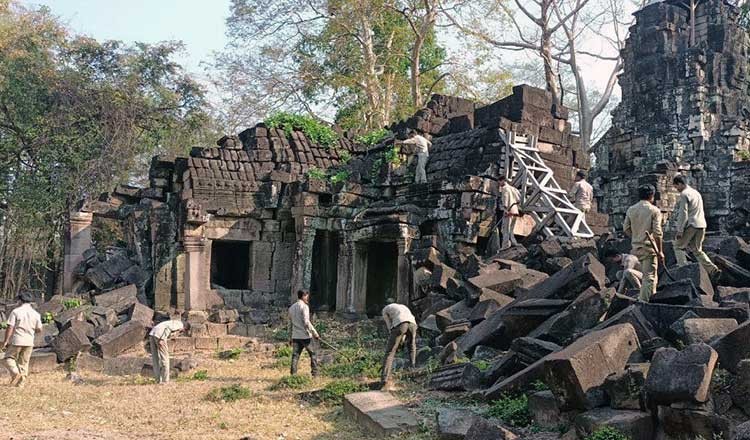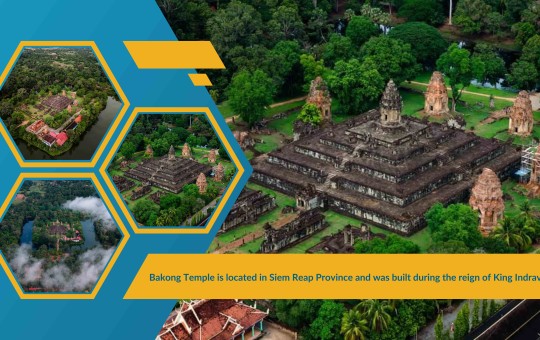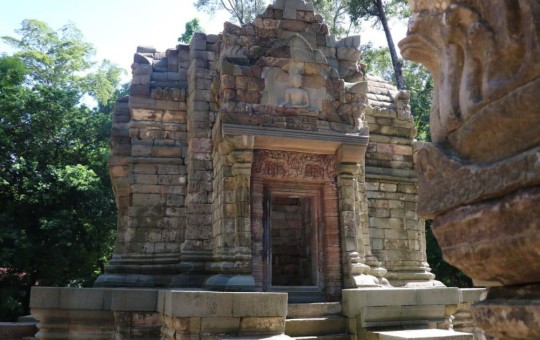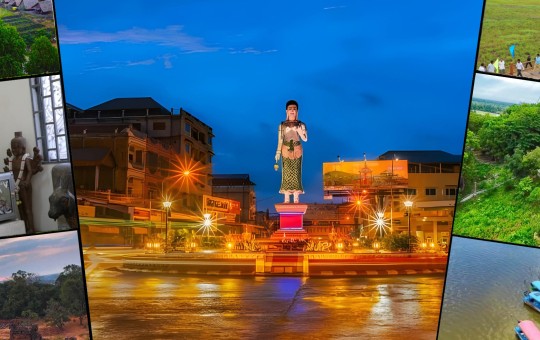
Preah Vihear registers archaeological sites
The Department of Culture and Fine Arts of Preah Vihear province is cooperating with local authorities to expedite registration of precise land locations for ancient temples throughout the province.
Nov Channy, director of the Department of Culture and Fine Arts, said yesterday that the registration process aims to prevent encroachment on the land of archeological sites by people living nearby.
He said that at present, local authorities have registered land ownership for about 30% of 286 sites with ancient temples scattered throughout Preah Vihear province.
Preah Vihear and Koh Ker temples are exempted from the process since they are under the control of National Authority for Preah Vihear.
He said that according to present laws, all land surrounding archeological sites up to 1.5 kilometre away are designated by the Ministry of Culture as state land.
The 1.5 km margin was set up to prevent any encroachment near the sites. The wide margin was adopted because, in the past, people encroached on the lands around and inside ancient temples’ compounds.
“If people try to encroach on ancient temples, we can show them the land titles. If they still violate the law, we will sue them for trespassing on state lands and archaeological sites, which is prohibited by law.”
“After local authorities have finished registering the land at the temple site, we need to set up more boundary markers to let the people know more clearly,” he added.
He said that in Preah Vihear province, the two districts with the largest number of ancient temples are Kulen and Choam Ksan.
Several temples are located in other districts, such as Chep, Chey Sen, Tbeng Meanchey, Sangkum Thmei and Rovieng districts.
Archaeologist Thuy Chanthuon said that he was happy that cultural officials had decided to register state ownership of all ancient temples in Preah Vihear.
He said the move will help protect precious sites from disturbances and other problems.
The registration of sites is especially important because there are so many ancient temples throughout the province – even more than in Siem Reap and Kampong Thom.
He said that he wants to see registration of every archaeological property – not only temples – but also ancient hills, ponds and tombs.
He added that the registration will help guarantee the preservation of ancient sites intact and in their original state.
He added that all Cambodian temples record historical evidence and represent the most valuable heritage of the society.
“Ancient temples are scattered throughout the province. In some places
they have lost their original shape. The effects of time and erosion are exacerbated whenever Cambodians dig around inside or nearby these sites. Therefore, it is important that all ancient
sites should be protected, preserved and never abandoned”, he added.




